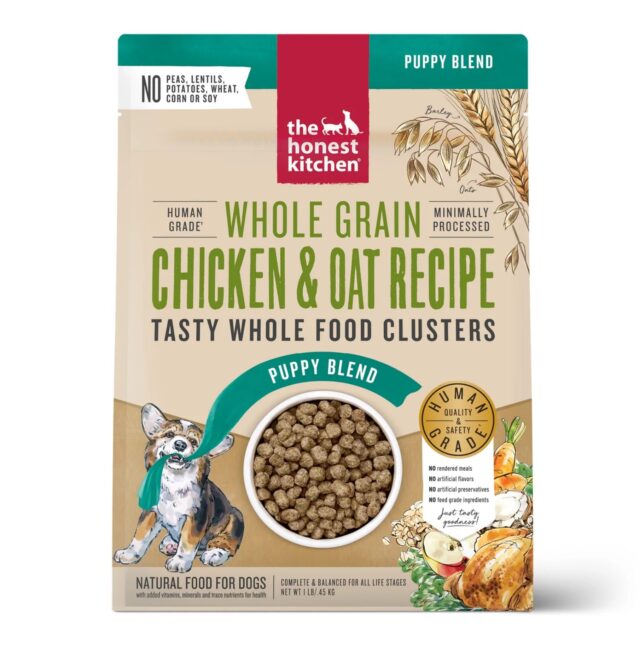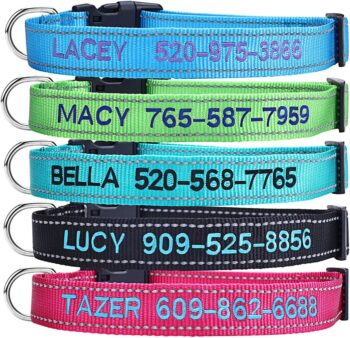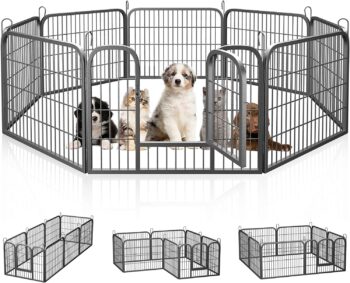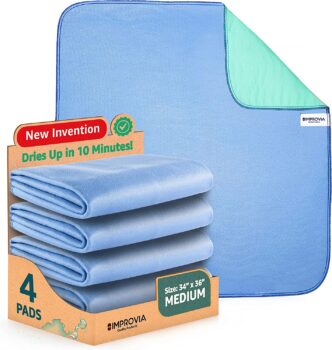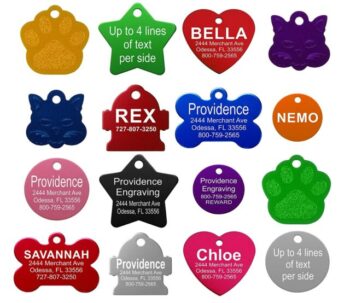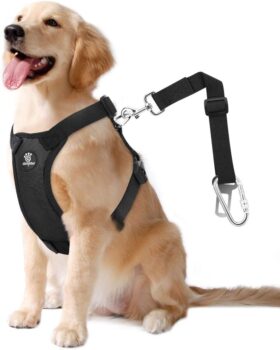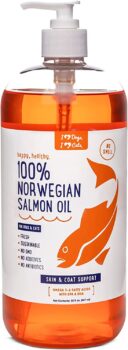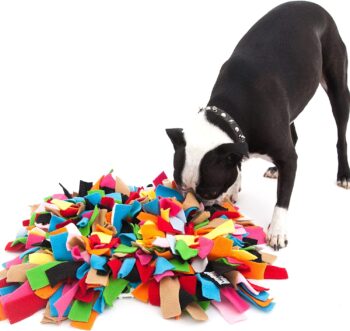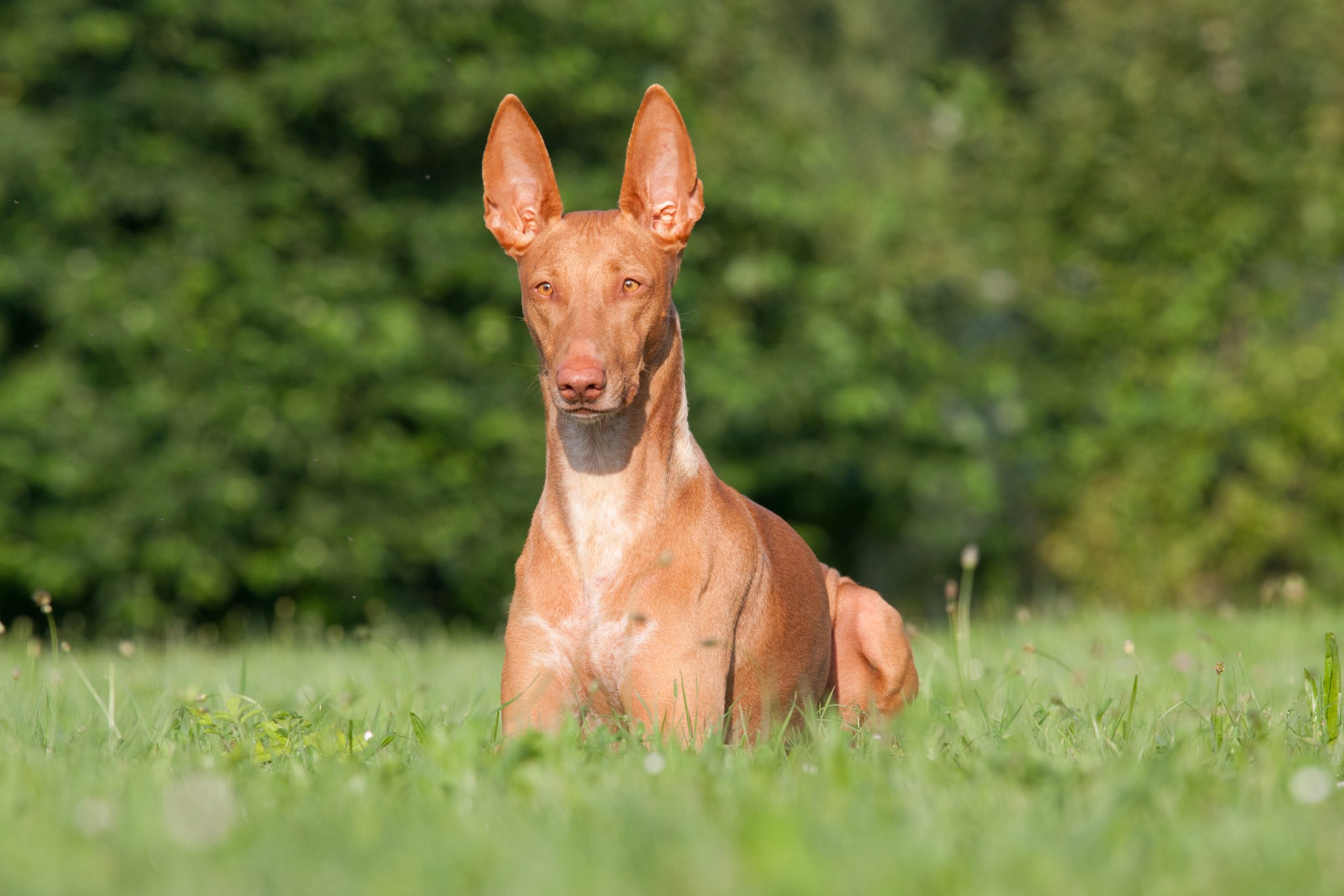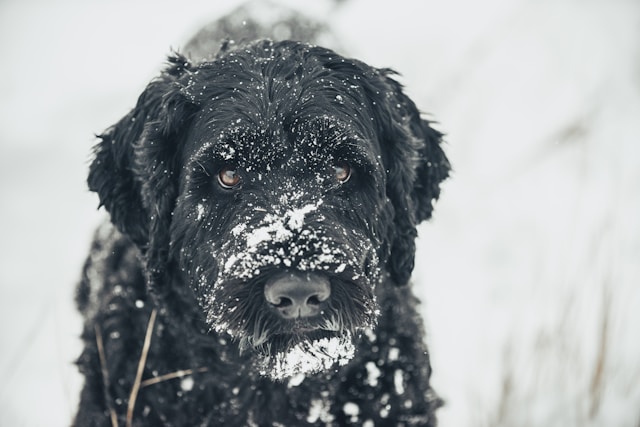
✅ The Complete Nova Scotia Duck Tolling Retriever Puppy Shopping List
Bringing home a new furry friend is an exciting time, but preparing for their arrival can be overwhelming. If you’ve decided to add a Nova Scotia Duck Tolling Retriever puppy to your family, you’ll want to make sure you have everything you need to keep them happy and healthy. From basic essentials like food and water bowls to training aids and toys, there are a lot of items you’ll want to have on hand. In this article, we’ve compiled a comprehensive new puppy checklist of 23 must-have items for new Nova Scotia Duck Tolling Retriever puppy owners, so you can feel confident that you’re fully prepared for your new furry family member.
1. Nova Scotia Duck Tolling Retriever Puppy Food
When it comes to choosing a good food for a nova scotia duck tolling retriever puppy, there are a few things to consider. Firstly, the puppy’s age. Puppies in the first few weeks of life will require different nutrition than older puppies. For example, a newborn puppy will need a food that is high in fat and protein, while an older puppy may require a food that is lower in fat and higher in fiber. Many nova scotia duck tolling retriever owners prefer to continue using the same food that the breeder or rescue was using, at least in the beginning. In addition, always speak with your veterinarian about their food recommendation.
To view which puppy foods iHeartDogs recommends, visit our guide here.
2. Food & Water Bowls
When choosing a water and food bowl for a nova scotia duck tolling retriever puppy, it’s important to choose one that is easy to clean and will not harbor bacteria. Plastic bowls are often the most popular choice, as they are inexpensive and can easily be replaced. However, plastic bowls are more likely to harbor germs. Stainless steel and ceramic bowls are a good choice, as they are more durable and do not hold onto odors. It’s important to choose a bowl that is the right size for your nova scotia duck tolling retriever puppy, as too large of a bowl could make it difficult for them to eat and drink from it. Additionally, try to find a bowl with a non-slip bottom, as this will help to keep it from sliding around on the floor when your puppy is eating or drinking. Finally, check for any sharp edges that could hurt your puppy.
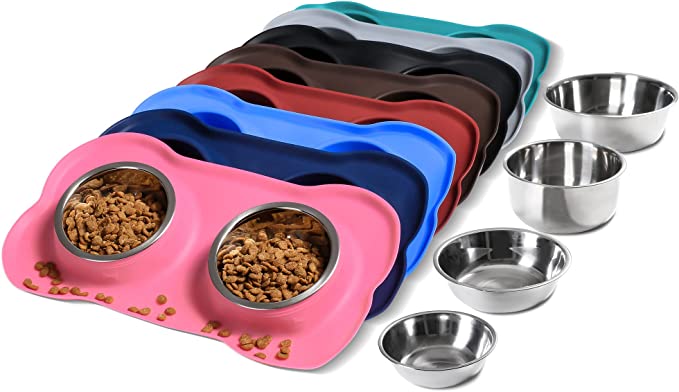
3. Leash and Collar (or Harness)
You’ll need a quality collar and a leash for your new nova scotia duck tolling retriever pup. Make sure the collar is the right size and comfortable for your pup to wear. Keep in mind they will likely grow out of them quickly, so you may want to buy multiple in different sizes.
For collars, we love these simple and durable embroidered collars. Having your dog’s name and phone number personalized directly on the collar is an extra precaution, as dog ID tags can easily wear out and fall off.
4. Dog Crate
If you plan to crate train your pup, you’ll need a crate. When choosing a crate for your puppy, there are a few things to consider. First, make sure to purchase one that is the appropriate size for your puppy. The crate should be big enough for your puppy to comfortably stand up, turn around, and lay down, but not too big that they have too much extra space. Second, consider the type of crate you purchase. Wire crates are more breathable and typically lighter, but plastic crates create a more enclosed space, which is ideal for puppies that are anxious or crate-trained. Third, think about the features of the crate. Look for crates with removable trays, handles, and locks for safety and convenience. Lastly, consider the price range of the crate. Many pet stores have a variety of crates within different price ranges, so you can choose one that fits your budget.

5. Nova Scotia Duck Tolling Retriever Appropriate Toys
When choosing toys for a new puppy, it’s important to find ones that are safe and durable. Look for toys that are made with non-toxic materials, are easily washable, and don’t have small parts that can be chewed off and swallowed. Soft, plush toys are great for cuddling and playing, and durable rubber or plastic toys can help with teething. Choose a variety of toys to keep your puppy entertained and help them learn about the world around them. It’s also a good idea to rotate toys. Periodically add and remove toys from your puppy’s toy box to keep them fresh and exciting. And lastly, always always monitor your puppy while playing to ensure they don’t destroy a toy and it becomes a choking hazard!

7. Natural & Safe Puppy Chews
In addition to durable toys, you’ll likely want to invest in some long-lasting natural chews for you nova scotia duck tolling retriever pup. Avoid chews with dangerous or synthetic ingredients like rawhide. Our puppies have always enjoyed the Earth Animal No-Hide chews. They looks and feel like rawhide, but are made from safe, but still long lasting ingredients.

8. Grooming Supplies
If you plan to groom your pup yourself, you’ll need some basic grooming supplies. This includes a brush, shampoo, nail clippers, and anything else you need to groom your pup.
9. Dog Bed
Choosing a good bed for your new nova scotia duck tolling retriever puppy is important. Look for one that is comfortable, supportive, and easily washable. Make sure the bed is large enough for your puppy to grow into, and that the material is durable enough to withstand wear and tear. Choose a bed that is made from a breathable material to help keep your puppy cool and comfortable. Finally, look for a bed that is easy to clean and maintain.

10. Treats
Choosing good treats for a new puppy can be a daunting task. The first thing to keep in mind is that not all treats are created equal. Some treats contain unhealthy ingredients that can cause health problems for your pup, so it’s important to read labels and understand what goes into the treats you’re purchasing. The next step is to consider the size and type of treat you’re looking for. Smaller treats are better for puppies, as they are easier to digest and can help prevent bloating or an upset stomach. Additionally, you don’t want to give a treat your puppy can’t chew, as this could lead to choking or swallowing a large piece. Training size treats are usually the best option.
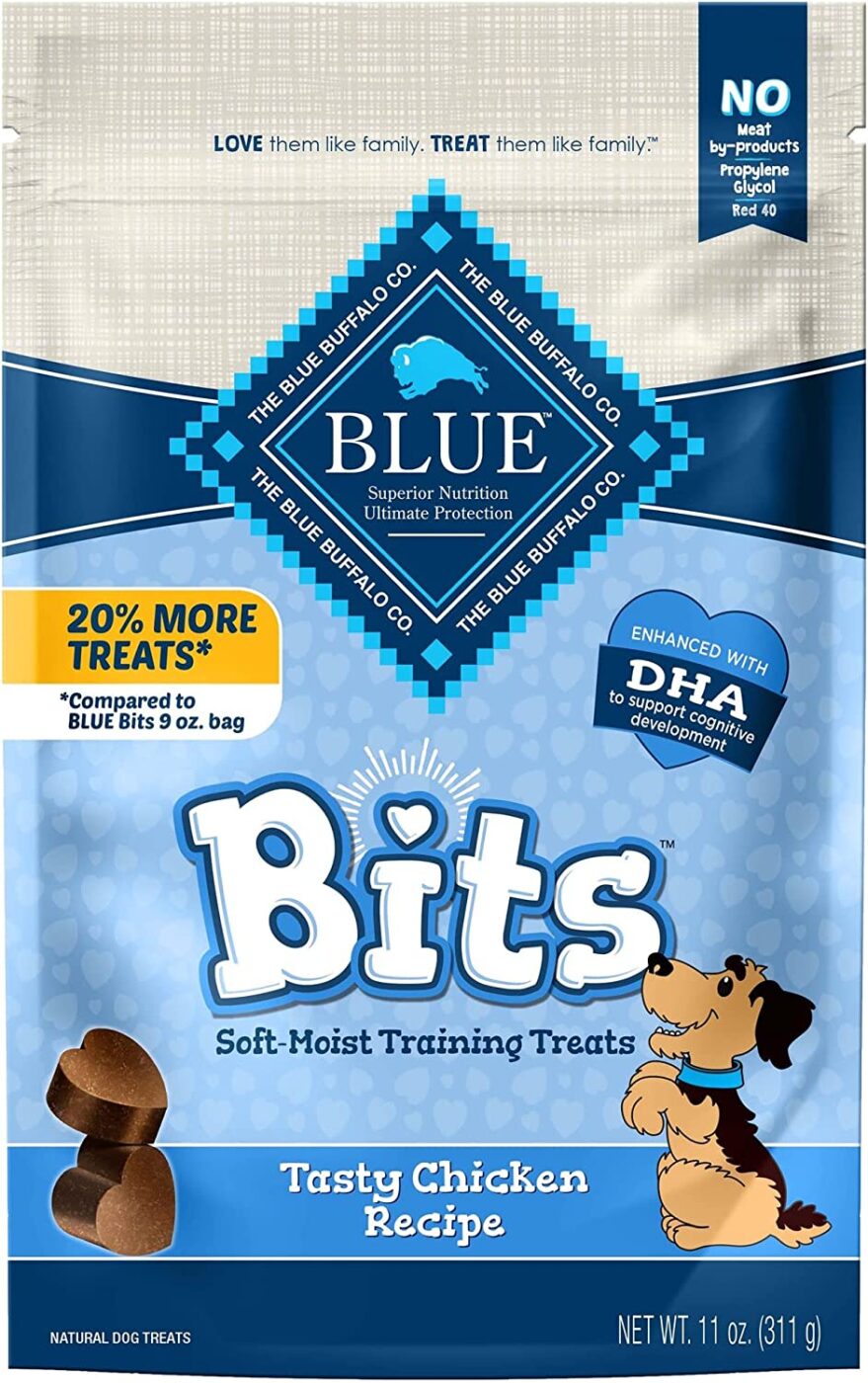
11. Poop Bags
A good stock of poop bags is absolutely essential. The best deal we’ve found on eco-friendly bags is this 540 box on Amazon. Don’t skimp on quality, as there is nothing worse than putting your hand into a poop bag only to find a hole!
12. First Aid Kit
Accidents can happen, so it’s important to have a pet first aid kit on hand in case of an emergency. This should include items like gauze, bandages, and antiseptic.

13. Puppy Probiotics (for the inevitable upset stomach)
Transitioning to a new home can be stressful to your new nova scotia duck tolling retriever pup. This stress often results in an upset stomach, which can make potty training extra difficult. A good quality, multi-strain probiotic can help soothe your dog’s stomach and regulate their bowl movements. We like this 3-in-1 probiotic chew that also includes prebiotics & digestive enzymes.
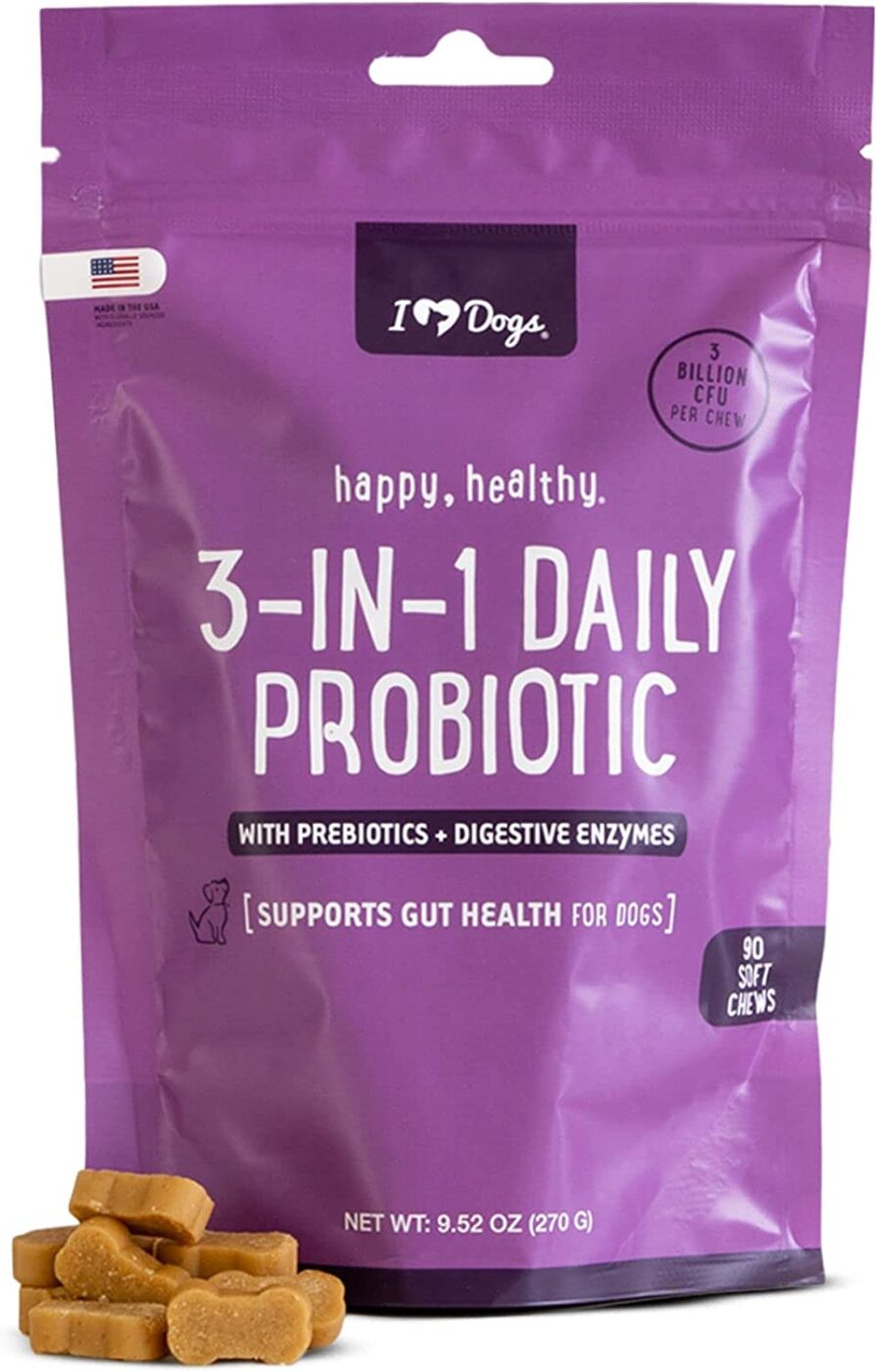
14. Puppy Gate or Pen
There will likely be times where you wish to keep your nova scotia duck tolling retriever puppy contained in a smaller area. There are many great puppy gates or pens available for such a need.
15. Puppy Toothbrush
Veterinarians recommend getting your new puppy use to teeth brushing at an early age. They should quickly get use to the idea of someone touching their teeth. We like these small, nearly invisible finger toothbrushes. iHeartDogs knows the importance of dental health for dogs (it could save their life as they age) so they give them away for free (just pay S&H)
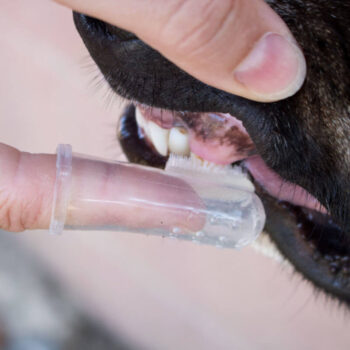
16. Urine & Odor Cleaner
Accidents happen! Inevitably, you’re going to need a good quality enzymatic urine cleaner. Our favorite formula is the Rocco and Roxie stain and odor eliminator on Amazon.
17. Puppy Potty Pads
When choosing pee pads for your new puppy it is important to consider the size, absorbency, and material of the pad. You’ll want to make sure the pad is large enough for your puppy to use comfortably and will last throughout the day. It’s also important to consider the absorbency of the pad. Look for a pad that will quickly and effectively absorb liquid and keep your puppy’s paws dry. In addition, you’ll want to make sure the material of the pad is safe for your puppy. Avoid materials that may contain harsh chemicals or irritants that could be harmful to your puppy’s skin. We love these eco-friendly, reusable potty pads on Amazon.
18. ID Tags
One absolute essential for your new pup is an ID tag to clip on their collar. In fact, go ahead and buy a couple, just in case one falls off! Make sure to include their name, and 2 phone numbers where you can be reached if someone finds your pup. Always remember to remove the collar (along with ID tag) if your puppy is left alone, as it can easily become tangled in something and risk serious injury. Here’s a round up of our favorite dog ID tag designs.
19. Seat Belt (for Harness)
If you plan on taking your nova scotia duck tolling retriever with you in the car, a seat belt that connects to their harness is a must! NEVER connect a seat belt to your dog’s collar, as even a small impact will put all the pressure on your dog’s neck.
We like this heavy duty seat belt from Amazon that includes a harness as well.
20. Calming Puppy Heartbeat Toy (to soothe anxiety)
One of the most popular new items for a nova scotia duck tolling retriever puppy is a calming heartbeat puppy plush toy. This plush mimics the heartbeat of a mother dog. It also includes a one time use heat pack to mimic the warmth as well. Many dog owners find these very useful for crate training or periods of time when the puppy needs to be left alone.
21. Fish Oil (for Brain Development)
Although not absolutely essential, if you were to give your nova scotia duck tolling retriever puppy one supplement, it should be a good quality fish oil. Fish oil contains Omega-3 fatty acids (DHA and EPA) which are critical for early brain development. While some foods contain a bit of fish oil, it’s often a minuscule amount, and doesn’t survive the high heat processing that kibble requires.
We love this Norwegian salmon oil on Amazon. If you compare it side by side next to a typical low quality fish oil, you’ll see (and smell) a huge difference.
22. Brain Games
We all know puppies need to exercise their bodies, but what about their brains? Teaching a dog to use smell to find treats is called “nosework” and its becoming an extremely popular way to engage a bored dog. Remember, a bored puppy is a destructive puppy!
We love this high quality snuffle mat on Amazon. We tried several and there is a big difference in quality of the fabric, many get dirty or teat easily.
23. Nova Scotia Duck Tolling Retriever Puppy Training Course
Last, but certainly not least: don’t forget dog training! Training your nova scotia duck tolling retriever puppy is absolutely critical for their development. Dog training could even save their life in an emergency!
We’re big fans of SpiritDog training, as their online courses have excellent, easy to understand videos. They also allow you to ask unlimited questions to their trainers.
Here’s our top recommendations for nova scotia duck tolling retriever puppy training courses:
They also have training bundles that are a much better value, since they contain multiple courses in one:
By having these items on hand, you’ll be well-prepared for your new nova scotia duck tolling retriever pup. While it might seem like a lot to buy, these items are essential for providing your pup with the care and attention they need. With the right supplies, you can give your pup the best start to their life.
Frequently Asked Questions by New Nova Scotia Duck Tolling Retriever Puppy Owners
Bringing home a new Nova Scotia Duck Tolling Retriever puppy is an exciting time, but it can also be overwhelming. As a new owner, you want to make sure you’re doing everything right to keep your furry friend happy and healthy. Here are four common questions that new Nova Scotia Duck Tolling Retriever puppy owners may ask:
1. What is the best diet for a Nova Scotia Duck Tolling Retriever puppy?
A Nova Scotia Duck Tolling Retriever puppy thrives on a balanced diet rich in proteins, fats, carbohydrates, vitamins, and minerals. Puppies, in particular, need a diet formulated for their rapid growth and high energy levels. Look for high-quality puppy foods that list meat as the first ingredient. It’s also important to feed them three to four small meals a day until they are six months old, after which you can switch to two meals a day. Consult with your veterinarian to tailor the diet to your puppy’s specific health needs and to decide on the appropriate portion sizes.
2. How much exercise does a Nova Scotia Duck Tolling Retriever puppy need?
Nova Scotia Duck Tolling Retrievers are high-energy dogs that require plenty of exercise, even as puppies. A good rule of thumb is to provide them with 5 minutes of exercise per month of age, twice a day, until they are fully grown. This can include walks, playtime in a secured area, and age-appropriate training exercises. Remember, their joints are still developing, so it’s important to avoid overly strenuous activities to prevent injury. As they grow, you can gradually increase the exercise duration and intensity.
3. What are the common health problems in Nova Scotia Duck Tolling Retrievers?
Nova Scotia Duck Tolling Retrievers are generally healthy, but like all breeds, they’re prone to certain health conditions. These can include hip dysplasia, progressive retinal atrophy, and autoimmune thyroiditis. It’s important to maintain regular veterinary check-ups to catch any early signs of these conditions. A healthy diet, regular exercise, and routine health screenings can help manage or prevent some of these issues.
4. How do I socialize my Nova Scotia Duck Tolling Retriever puppy?
Socializing your Nova Scotia Duck Tolling Retriever puppy is crucial for their development. Introduce them to a variety of people, dogs, and situations starting from a young age. Puppy training classes are a great way to socialize your puppy in a safe and controlled environment. Remember to keep each new experience positive, and use treats and praise to encourage your puppy. Gradual exposure to different stimuli will help them grow into well-adjusted adults.
5. How do I train my Nova Scotia Duck Tolling Retriever puppy not to bite?
Teaching your Nova Scotia Duck Tolling Retriever puppy not to bite is an important part of their training. Whenever they bite, respond with a firm “no” or stop the play session immediately to show that biting ends fun activities. Offer them chew toys as an appropriate alternative to biting hands or clothes. Consistency and patience are key in teaching them what is acceptable behavior. If biting persists, consider enrolling in puppy training classes for professional guidance.
6. How often should I groom my Nova Scotia Duck Tolling Retriever puppy?
Nova Scotia Duck Tolling Retrievers have a water-resistant double coat that requires regular grooming. Brushing them once or twice a week helps remove loose fur and prevent matting. During shedding season, you may need to brush them more frequently. Bathing should be done every few months or as needed. Don’t forget to regularly check and clean their ears, trim their nails, and brush their teeth for overall health and hygiene.
7. What are the best training methods for Nova Scotia Duck Tolling Retrievers?
Nova Scotia Duck Tolling Retrievers respond best to positive reinforcement training methods. This includes using treats, praise, and play as rewards for good behavior. They are intelligent and eager to please, making them relatively easy to train. However, they can also be stubborn, so consistency and patience are crucial. Start with basic obedience training early on and gradually move to more complex commands and tricks.
8. Can Nova Scotia Duck Tolling Retrievers live in an apartment?
Nova Scotia Duck Tolling Retrievers can adapt to apartment living if they are given sufficient exercise and mental stimulation. They are active dogs that require regular, vigorous exercise to prevent boredom and destructive behavior. Daily walks, runs, and play sessions are essential. Additionally, engagement in activities like fetch, agility training, or swimming can help keep them mentally and physically satisfied.
9. What should I do if my Nova Scotia Duck Tolling Retriever puppy is afraid of water?
Not all Nova Scotia Duck Tolling Retrievers instinctively love water. If your puppy is hesitant, introduce them to water gently and gradually. Start with shallow, calm water and encourage them with toys or treats. Never force them into water as it can increase their fear. Over time, as they become more comfortable, they may start to enjoy swimming. Always supervise your puppy around water to ensure their safety.
10. When should I start training my Nova Scotia Duck Tolling Retriever puppy?
You can start basic training as soon as you bring your Nova Scotia Duck Tolling Retriever puppy home, typically around 8 weeks of age. Early training should focus on socialization, potty training, crate training, and basic commands like “sit,” “stay,” and “come.” Early training lays the foundation for a well-behaved adult dog and helps establish a strong bond between you and your puppy. Remember to keep training sessions short, positive, and fun.
Bringing home a new Nova Scotia Duck Tolling Retriever puppy is a big responsibility, but it’s also a rewarding experience. By providing your puppy with a healthy diet, plenty of exercise, proper training, and socialization, you can help them become a well-behaved and beloved member of your family.

